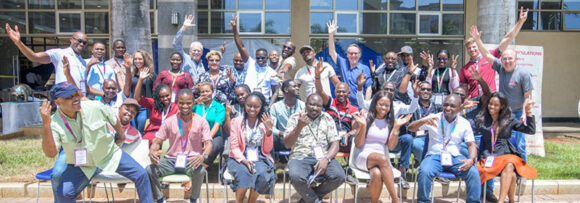
Agromyx‘s Fonio Flakes are available on Amazon. Fonio is a heritage grain from West Africa. Fonio flakes are a bit like corn flakes, but with smaller kernels and a lot more crunch. Give it a try, they are delicious!
A year ago we touted $24 million in aggregate annual revenues from the bizi for calendar year 2022, up more than three-fold from 2019. For 2023, that total exceeded $36 million, which is more than 5x in four years, and up 60x over the last decade. The bigger growth stories in 2023 were: TRUK Rwanda, which tripled in 2023 to $6.4 million in annual revenues, up from zero four years earlier as the...

It’s almost time for Africa Eats’ annual “Gathering”, where all of the bizi founders fly to Nairobi for two days of facilitated discussions including a deep dive into building the missing business infrastructure for African SMEs, including a plan to unlock the capital markets. This event is unlike any other we know of. It is the day after Sankalp, but far more interactive...

There is no global authority that defines SME, but the EU sets a definition for the EU. The boundaries between “micro“, small, and medium are a mix of employee headcount with either revenues or balance sheet.
Africa Eats specializes in turning micro enterprises into small and then medium-sized enterprises. See Fast-growing SMEs for examples of seven success stories.

Ziweto Enterprise started as a wholesaler and retailer of agrovet supplies, and they have grown to be the largest such company in Malawi. Last year Ziweto Nutrition Solutions was opened, manufacturing animal feeds to sell in those stores. Last month we visited the factory in Lilongwe, Malawi.
Ziweto Enterprise
About Us

Africa Eats’ mission is to lower hunger and eliminate poverty across Africa. Dropping post-harvest losses from 40% to 2% is one way to lower hunger. The other is increasing the incomes of farmers, which simultaneously and directly eliminates poverty. On average, the bizi double the income of their farmers. We’ve seen that proven in the first 60 Decibels report on the farmers of East...

It’s quite rare when the U.S. media has something nice to say about Africa. This week was an exception, in The New York Times, in an interactive digital article about the population growth and economic growth of the African continent. The median age in Africa here in 2023 is just 19 years old, nearly a decade younger than in India and the rest of South Asia. By 2050, more than 1/3rd of all...

Which sounds and feels biggest? $2.83 million per month $8.5 million per quarter $34 million per year Back in mid-2020, when Africa Eats was founded, we were touting total aggregate revenues across the whole portfolio of companies as $7 million. That was the actual revenue earned by the “bizi” in 2019. In the three months of Q2 2023 (April-June), the bizi earned $8.5 million. That is...

Venture capital and angel investing are realms filled with unspoken assumptions. One such assumption is that companies should burn through substantial capital before even considering profitability. This notion is misguided! Countless startups, often overlooked by these investors, are compelled to be profitable to survive. If these investors took a moment to recognize these startups, they would...

The biggest challenge the bizi face is keeping up with demand. Truly. Those challenges then trickle down to the other common challenges of scaling up: hiring, operational capital, expanding systems, etc., but the root cause of capital needs at Africa Eats is the “high class problem” of too many orders. For example, here in 2023 Rwanda is one of the 10 fastest growing economies on the...